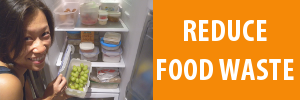2 hawker centres to pilot food waste recycling systems [News]
January 24, 2016 by Save Food Cut Waste
Filed under Blog
By Chan Luo Er, Channel NewsAsia, 21 Jan 2016
A two-year on-site food waste recycling pilot at two hawker centres, Ang Mo Kio Blk 628 Market and Tiong Bahru Market, was launched on Thursday (Jan 21).
The National Environment Agency (NEA) estimated that each market generates two to three tonnes of food waste daily, with the majority from stalls in the wet market and table cleaning operations. If the pilot is successful, food waste recycling could reduce the total waste generated from both hawker centres by up to 80 per cent, the agency said.
For instance, the machine at Ang Mo Kio Blk 628 Market, operated by Eco-Wiz, is able to convert one tonne of food waste into water within 24 hours. Customised microbes would break down food waste to convert it into water, and the water is then used for cleaning the bin centre.
Click here to read the full article
Source: Channel NewsAsia
Food waste recycling trial at hawker centres and markets
January 23, 2016 by Save Food Cut Waste
Filed under Blog
A two-year on-site food waste recycling trial at Ang Mo Kio Blk 628 Market and Tiong Bahru Market was launched by the National Environment Agency (NEA) on Thursday, to test the economic viability and operational feasibility of two different types of on-site food waste recycling systems. The systems are leased by NEA from two vendors – Eco Wiz (SG) and VRM Operations (Singapore), and the vendors would also be in-charge of maintaining the systems. The pilot trial is expected to conclude in Dec 2017.
Zero Waste SG visited the 2 trial markets for the launch, which include both hawker centres and wet markets. Ang Mo Kio Blk 628 Market (with 218 stalls) generates about two tonnes of food waste per day, while Tiong Bahru Market (with 342 stalls) generates about three tonnes of food waste per day. Most of the food waste are generated from market slab stalls and table cleaning operations. The food waste recycling systems could reduce up to 80% of the total waste generated from both locations. Read more









